Over time, many growers have discovered that certain plants thrive exceptionally well in Deep Water Culture (DWC) systems. They often find that selecting the right species can lead to impressive yields and healthy growth. This method allows for optimal nutrient uptake, making it imperative to choose plants that can maximize the benefits of this hydroponic system. In this blog post, he, she, and they will explore the best plants suited for DWC cultivation, revealing which varieties not only flourish but also deliver top-quality harvests.

Key Takeaways:
- Deep Water Culture (DWC) systems provide an ideal environment for fast-growing plants due to their access to oxygen and nutrients.
- Leafy greens such as lettuce, kale, and spinach tend to thrive in DWC setups, offering high yields and quick harvest cycles.
- Fruit-bearing plants like tomatoes, peppers, and cucumbers adapt well to DWC, delivering impressive results when properly maintained.
- Herbs such as basil, mint, and cilantro flourish in DWC systems, providing flavorful additions to meals while ensuring steady growth.
- Monitoring pH and nutrient levels is vital for maximizing plant health and yields in any DWC garden.
The Perfect Conditions: Why DWC is Ideal for High Yields
Nutrient Efficiency and Rapid Growth Rates
Hydroponic systems such as Deep Water Culture (DWC) allow for a highly efficient delivery of nutrients directly to plant roots, leading to remarkable growth rates. In DWC, the nutrient solution is both oxygenated and well-balanced, which significantly enhances the plant’s ability to absorb necessary minerals and compounds. Research indicates that plants grown in DWC may experience growth rates that are 25% to 50% higher than those grown in traditional soil-based systems. This efficiency also translates into a higher yield, as plants have access to all necessary nutrients without the competition or limitations found in soil environments.
The controlled environment of DWC also facilitates precise management of nutrient concentrations. Growers can easily adjust the pH and Electrical Conductivity (EC) levels, tailoring the nutrient solution to meet the specific needs of the plants throughout their growth stages. This adaptive approach not only optimizes plant health but also maximizes the overall yield, with some growers reporting unexpected increases in productivity during the flowering cycle.
Oxygenation and Its Impact on Root Development
Oxygen availability plays a pivotal role in the health and vitality of plant roots. In DWC systems, the roots are submerged in nutrient-rich water that is continuously aerated, ensuring that they receive an ample supply of oxygen. This aeration promotes strong, healthy root systems that can absorb water and nutrients more efficiently. Observations have shown that roots in DWC can grow up to 2 to 3 times faster compared to those in soil, given their enhanced oxygen exposure.
Root systems that thrive in a well-oxygenated environment not only contribute to overall plant health but also enhance nutrient uptake. Studies have demonstrated that plants in DWC with superior root development produce significantly higher yields, as they can sustain more foliage and fruit or flower production. This phenomenon showcases the direct correlation between oxygenation and the potential for achieving impressive harvests in hydroponic setups.
The constant supply of oxygen assists in the establishment of beneficial microorganisms around the roots, further enriching the growth environment. Oxygenated environments also minimize the risks of root rot and other diseases, ensuring that plants remain productive and vibrant throughout their life cycles. With functional roots leading to optimal nutrient uptake, the likelihood of encountering growth stagnation diminishes, paving the way for an impressive yield.
Top Performers: Best Plants for DWC Systems
Leafy Greens: The Champions of Hydroponics
Leafy greens consistently thrive in Deep Water Culture (DWC) systems, making them a top choice for growers seeking quick and abundant yields. Varieties such as lettuce, spinach, and kale are especially suitable due to their rapid growth cycles and adaptability to hydroponic conditions. They can be harvested multiple times within a few weeks, which significantly boosts the productivity of a DWC setup. For instance, growers have reported lettuce reaching harvest size in just four to six weeks, a feat that traditional soil cultivation cannot match.
In addition, leafy greens have minimal nutritional demands compared to other crops, which simplifies the management of nutrient solutions. The ease of growing these vegetables in a DWC system allows for consistent production, especially in controlled environments like greenhouses. This results in superior flavor and freshness, which is especially enticing for market growers.
Fruiting Plants: Unlocking Exceptional Yields
Fruiting plants represent an exciting category for those utilizing DWC systems. Crops such as tomatoes, peppers, and cucumbers not only flourish but also produce remarkable yields. DWC environments provide the crucial oxygenation and nutrient uptake that these demanding plants require, often leading to larger fruits and higher overall productivity. For instance, tomatoes grown in DWC systems can yield significantly more compared to soil-grown counterparts, with some growers documenting harvests upwards of 20 pounds per plant.
The ability to control environmental factors like pH and nutrient concentration enables precise tailored care for fruiting plants, enhancing growth rates and fruit size. Furthermore, orderly pest and disease management becomes feasible in hydroponics, which is paramount for keeping fruiting plants healthy and productive.
This method has proven particularly beneficial for growers interested in high-density planting, as DWC allows for plants to be grown closer together without competing for soil nutrients. Enhanced light distribution further boosts yields, with many DWC growers achieving remarkable success with vertical setups.
Herbs: Flavorful Additions That Thrive
Herbs such as basil, cilantro, and mint are also excellent candidates for DWC systems, offering not just culinary delight but also exceptional growth rates. These aromatic plants tend to flourish in a hydroponic environment, with basil, for example, often doubling its size in mere weeks. The rich flavors of these herbs are intensified in DWC, largely attributed to the optimal nutrient absorption as well as the exposure to consistent moisture and oxygen levels.
Additionally, herbs have a shorter crop cycle than fruiting or leafy vegetables, making them an excellent option for continuous harvesting. They can be harvested multiple times, often just weeks apart, providing a steady stream of fresh produce. This rapid turnover is particularly advantageous for market growers, as fresh herbs are always in high demand.
In the aggregate, a diverse range of plants can be successfully grown in DWC systems, with each type offering unique benefits. Leafy greens stand out for their rapid growth, while fruiting plants maximize productivity through enhanced yields. Likewise, the cultivation of herbs provides flavorful options that thrive in hydroponic environments. Each of these categories presents an opportunity for growers to optimize their operations and increase their overall success.
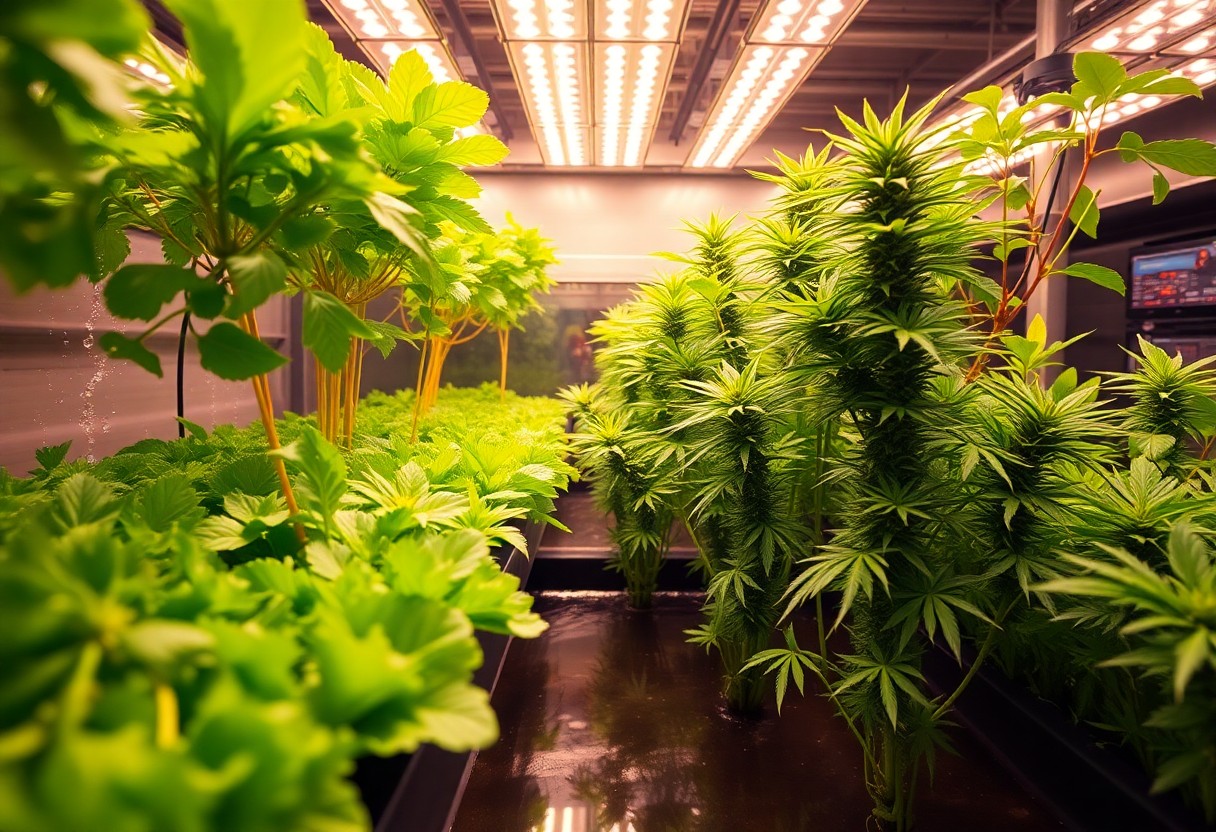
The Role of Light: Maximizing Growth and Yield
Understanding Light Spectrum and Plant Needs
Different plants respond to varying light spectra, and understanding these nuances can significantly impact growth rates and yield. For instance, blue light, which falls within the 400-500 nm range, promotes vegetative growth, making it ideal for seedlings and leafy greens. In contrast, red light between 600-700 nm assists in flowering and fruiting stages, playing a vital role for fruit-bearing plants like tomatoes and peppers. Growers often use LED grow lights that can be adjusted to emit specific wavelengths, allowing them to tailor the light spectrum to match the growth stage of their plants.
Research indicates that a balanced combination of both blue and red light leads to optimal photosynthesis and plant performance. In fact, studies show that plants exposed to a full spectrum of light produce yields 20-30% higher compared to those under limited light conditions. Thus, growers should not only focus on brightness but also ensure that the right light spectrum reaches their plants to maximize growth potential.
Optimal Light Duration: Balancing Growth Cycles
The duration for which plants are exposed to light directly affects their growth cycles, with different species requiring unique photoperiods. Most leafy greens thrive under long periods of light, often needing 14-18 hours of light each day to optimize growth. Conversely, plants that flower, such as cannabis, typically benefit from shorter light durations as they transition from the vegetative to the flowering stage. A standard photoperiod of 12 hours of light and 12 hours of darkness is commonly employed for flowering plants, mimicking seasonal changes and signaling to the plants that it’s time to reproduce.
Balancing light duration requires a deliberate approach. For example, some farmers may initiate with a 16/8 light cycle during the vegetative phase to promote lush foliage and then switch to a shorter cycle as the plants mature. Such adjustments not only support growth efficiency but also help conserve energy, reducing operational costs in the long run. Additionally, utilizing timers can enhance consistency in light schedules, preventing any interruptions that might stress plants.
Understanding the needs of specific plants allows growers to craft light strategies that can drastically affect overall harvest potential. By continuously monitoring plant response to light patterns and adjusting accordingly, they can create an environment that maximizes both growth and yield through carefully timed exposure. This adaptability ensures that plants receive appropriate light durations throughout their life cycle, boosting overall health and productivity within DWC systems.
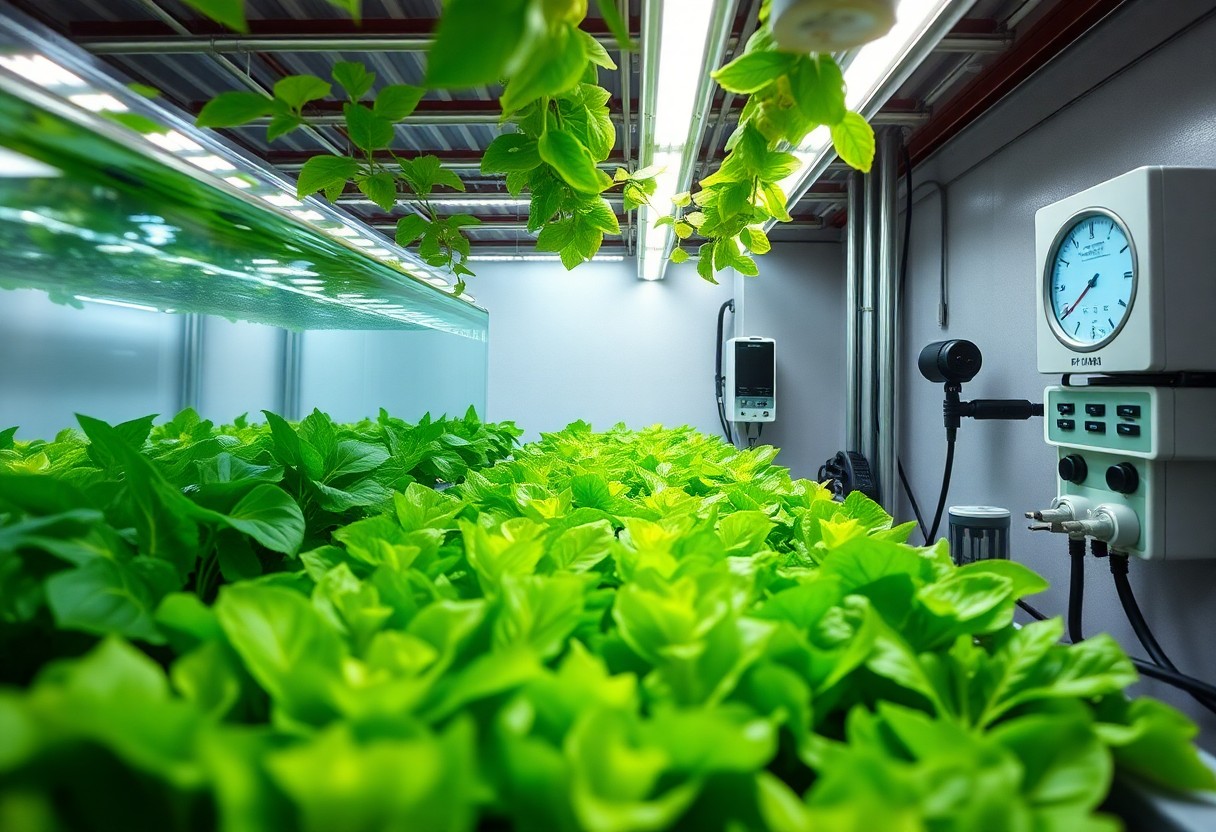
Nutrient Management: The Science of Feeding DWC Plants
Essential Nutrients for Maximum Growth
The success of growing plants in DWC systems heavily relies on their access to important nutrients. Key macronutrients include nitrogen, phosphorus, and potassium, often termed N-P-K, which play vital roles in plant structure, energy transfer, and overall growth. For instance, nitrogen is necessary for leaf growth, while phosphorus is crucial for root development and flowering. Potassium contributes to nutrient uptake and the resilience of plants against diseases. Adequate levels of secondary nutrients like calcium, magnesium, and sulfur also support robust metabolic functions, ensuring that plants reach their potential yields.
Micronutrients cannot be overlooked, as they are vital in small quantities. Elements such as iron, manganese, zinc, and copper function like catalysts in numerous biochemical processes within the plant. There have been studies where deficiencies in these trace elements led to stunted growth and lower yields, highlighting the importance of well-balanced nutrient solutions tailored to different growth stages.
pH Levels and Their Importance in Hydroponics
A proper pH balance in DWC systems significantly influences nutrient uptake and plant health. Generally, a pH range of 5.5 to 6.5 optimizes nutrient absorption for the majority of plants. If the pH drifts out of this range, specific nutrients can become unavailable, leading to deficiencies despite their presence in the nutrient solution. For example, a pH above 7 can cause iron and manganese to precipitate, rendering them useless to the plant, while a more acidified solution can hinder the uptake of calcium and magnesium.
This delicate balance requires regular monitoring and adjustment to prevent nutrient lockout. Utilizing tools like pH meters or pH test strips assists growers in maintaining the ideal levels, and incorporating pH up or down solutions can effectively rectify any fluctuations. Creating a nutrient delivery system with consistent pH monitoring greatly enhances the likelihood of achieving substantial growth, ultimately resulting in higher yields.
Troubleshooting Common DWC Challenges
Algae Growth: Prevention and Control
Algae thrives in warm, nutrient-rich water, making it a frequent problem in DWC systems. The proliferation of algae not only competes with plants for nutrients but can also block light and harm root health. Preventing algae growth starts with covering reservoirs to eliminate light exposure, as algae require light to flourish. Additionally, maintaining water temperature below 70°F can create an environment less favorable for algae proliferation. Using opaque containers or adding a layer of mulch on the surface of the nutrient solution can significantly reduce light penetration and inhibit algae growth.
If algae has already formed, controlling it involves several strategies. Applying hydrogen peroxide can help eliminate algae without harming plants, provided it’s used at appropriate concentrations. Implementing aeration into the DWC system improves water oxygen levels, thereby fostering a healthier microbial environment that suppresses algae. Regular monitoring of nutrient solution clarity and consistency ensures early identification of algae problems, allowing for timely intervention.
Root Rot: Signs, Symptoms, and Solutions
Root rot remains one of the most serious threats to hydroponic systems, often caused by excess moisture and insufficient oxygen levels in the root zone. Signs of root rot include yellowing leaves, wilting, and a general decline in plant health. Upon inspection, the roots may appear brown, mushy, and emit a foul odor, indicating anaerobic conditions. The presence of these symptoms should immediately prompt an assessment of the nutrient solution’s pH levels, oxygenation, and water temperature.
Solutions for combatting root rot include ensuring proper aeration in the water, keeping water temperatures stable, and using beneficial microbes that can help fight pathogenic organisms. Replacing the nutrient solution with fresh, oxygen-rich water and removing affected roots can sometimes salvage a plant in distress. Using disease-resistant plant varieties or implementing a routine schedule for changing the nutrient solution can also minimize risks associated with root rot.
Another layer of preventive action involves utilizing beneficial bacteria and mycorrhizal fungi that promote healthy root systems. These microorganisms compete with pathogens and contribute to overall plant vitality. Regular testing of water parameters, such as dissolved oxygen levels, pH, and nutrient concentration, further strengthens strategies against root rot. Keeping these environmental factors within optimum ranges supports robust plant growth, decreasing vulnerability to disease.
Advanced Techniques for Elevating Yields
To achieve the highest yields in DWC systems, growers can implement a variety of advanced techniques. These methods focus on refining their approach and taking full advantage of the hydroponic environment. Below are key strategies that can significantly enhance production:
- Optimal pH and Nutrient Management: Maintaining the right pH level (between 5.5 and 6.5) and ensuring nutrient solutions are balanced can lead to robust plant health.
- Temperature Regulation: Ensuring the water temperature remains between 18-22°C for optimal root development and nutrient uptake.
- Enhanced Aeration: Incorporating air stones or pumps in the reservoir to increase oxygen levels, which is necessary for root respiration.
- Advanced Lighting Techniques: Using specific light spectrums and timers to optimize growth cycles during vegetative and flowering stages.
- Integrated Pest Management: Early detection and management of pests to reduce crop stress and maintain high yields.
| Technique | Description |
|---|---|
| Optimal pH and Nutrient Management | Adjusting nutrient levels to promote growth and prevent deficiencies. |
| Temperature Regulation | Maintaining ideal water temperatures to enhance growth rates. |
| Enhanced Aeration | Utilizing air stones or pumps to ensure roots receive adequate oxygen. |
| Advanced Lighting Techniques | Implementing the right light spectrum to support each growth stage. |
| Integrated Pest Management | Employing strategies to detect and manage pest issues effectively. |
Cloning: Rapid Expansion of Successful Varieties
Cloning serves as a powerful method to replicate successful plant varieties, allowing growers to maximize their potential. By taking cuttings from healthy mother plants and placing them in a DWC system designed for clones, one can encourage rapid root development and establish new plants quickly. With the right conditions, cloning can produce plants with identical genetics, leading to uniform growth rates and yields.
Many growers report that they can expect roots to develop significantly within just a week or two in a DWC setup. Utilizing cloning gel or solution can enhance root production, giving plants the best start possible. This efficient propagation method allows for constant production cycles, ensuring that the grower can continue to harvest while maintaining quality strains tailored to their specific market demands.
Continuous Harvesting Strategies
Implementing continuous harvesting strategies allows growers to enjoy yields year-round. This system involves staggering planting times and harvesting periods so that while some plants are being harvested, others are maturing. By adopting this approach, a grower can minimize downtime and ensure a steady flow of produce, which is especially beneficial for commercial operations aiming to meet consumer demand.
Managing various plant ages within the same system presents a unique opportunity to maximize space and resources. Those employing this strategy often utilize a rotation schedule, which not only maintains a regular harvest but also allows them to experiment with different plant types or varieties without disrupting the overall system functionality. By carefully monitoring growth stages and nutrient requirements, efficiency can be achieved seamlessly.
Moreover, utilizing techniques such as the nutrient film technique (NFT) alongside DWC can diversify transitional spaces, leading to higher yields. Adaptability in harvesting and planting schedules contributes to an overall increase in productivity and maximizes the space available in a hydroponic setup. The result is a model of efficiency where fresh produce can continuously flow from the system, visually appealing to customers while providing consistent revenue streams.
The Economic Benefits of DWC in Plant Production
Cost-Effectiveness Compared to Soil-Based Methods
Cost-effectiveness is a significant advantage of Deep Water Culture (DWC) systems over traditional soil-based methods. Initial investment in hydroponic systems may appear higher, but long-term savings and returns often outweigh these costs. According to recent studies, DWC systems can yield crops at rates up to 30-50% greater than their soil-based counterparts. The elimination of soil-related issues such as pests, diseases, and weeds reduces the need for pesticides and herbicides, resulting in lower operational expenses.
Additionally, water efficiency in DWC systems leads to substantial savings. Hydroponics uses up to 90% less water compared to conventional soil farming. In a detailed comparison, producing romaine lettuce in a DWC system can cost around $2.50 per pound, while the same amount grown in soil can reach up to $4.00 per pound, illustrating significant savings that can be achieved through DWC cultivation.
| Aspect | DWC Systems | Soil-Based Methods |
|---|---|---|
| Initial Investment | Higher, but offset by longevity | Lower, but limited durability |
| Yield Rates | 30-50% higher | Standard rates |
| Water Usage | 90% less | Higher consumption |
| Pesticide Need | Minimal | Higher due to soil pests |
| Crop Production Cost | $2.50 per pound (romaine) | $4.00 per pound (romaine) |
Market Trends and Consumer Demand for Hydroponics
Growing awareness about the environmental benefits and nutritional advantages of hydroponically grown produce is driving an increase in consumer demand. Studies show that about 40% of consumers in urban areas actively seek hydroponically grown foods, indicating a shift in preferences towards sustainable agricultural practices. Retailers are adapting to these trends by expanding their offerings of hydroponic products, catering to a market that values freshness, quality, and sustainability.
Another factor contributing to the demand for DWC-grown plants is the impact of global events on food security. With supply chain disruptions causing fluctuations in food availability, consumers and retailers alike are turning to local hydroponics as a reliable source of fresh produce. This movement is bolstered by the expansion of urban farming initiatives, where DWC systems allow for efficient space utilization and year-round crop production, aligning with contemporary consumer desires for local and sustainable food sources.
Final Thoughts: Cultivating Your Hydroponic Future
Innovation in Hydroponics
As they research deeper into DWC hydroponics, growers discover a realm of innovation that can revolutionize their operations. The dynamic nature of hydroponic systems allows for flexibility and adaptation. For example, utilizing automated nutrient delivery systems can help maintain optimal nutrient levels, ensuring that plants receive the precise amount they need for robust growth. Many growers cite a rise in crop quality and quantity after implementing these technologies, with yields often exceeding standard benchmarks by over 30% in some cases.
Embracing Challenges
While the potential for success is vast, challenges within DWC systems can arise. Algae growth, for example, poses a significant risk, yet proactive management strategies can prevent this. Implementing light-blocking materials for reservoirs and ensuring proper airflow can mitigate these concerns. Growers who have faced complications often share that learning from these experiences enhances their overall understanding of plant needs and hydroponic dynamics, ultimately leading to better outcomes in subsequent cycles.
Community and Knowledge Sharing
The hydroponic community is an invaluable resource for members at all experience levels. Engaging in forums, attending workshops, and participating in local hydroponic clubs can provide growers with insights and techniques that may not be covered in traditional literature. For instance, a recent case study showcased a group of growers in a local co-op sharing their successes with specific DWC strains resulting in astonishing basil growth, prompting collective experimentation and enhanced yields across multiple gardens.
Looking Ahead
Future advancements in hydroponics, especially within DWC, promise to push the boundaries of what’s possible in sustainable agriculture. With ongoing research into genetically modified strains that thrive in hydroponic systems and advancements in sensor technology that continuously monitor plant health metrics, growers have endless possibilities to explore. This evolution not only makes growing easier but also aligns with global sustainability goals, allowing growers to fulfill consumer demand for high-quality, locally-sourced produce year-round.
Maximizing Your Hydroponic Journey
Each grower’s journey is unique, and cultivating a successful hydroponic garden involves continuous learning and experimentation. By actively seeking knowledge, embracing innovations, and sharing experiences with the community, they can transform their DWC systems into a powerhouse of productivity. Investing time in mastering the techniques specific to this method guarantees high yields, better crop quality, and long-term sustainability.
FAQ: Best Plants to Grow in DWC for High Yields
Q: What is Deep Water Culture (DWC)?
A: Deep Water Culture (DWC) is a hydroponic growing method where plants are suspended in a nutrient-rich oxygenated water solution. The plant roots are submerged in water, promoting rapid growth as they have direct access to nutrients and oxygen. This method can yield high-quality and high-quantity harvests when managed correctly.
Q: What types of plants are best suited for DWC systems?
A: The best plants for DWC systems typically include leafy greens and fruiting plants. Examples include lettuce, basil, kale, and herbs like cilantro. Additionally, high-yielding fruiting plants like tomatoes, cucumbers, peppers, and strawberries thrive in DWC setups, as they benefit from the constant nutrient availability.
Q: How can I optimize yield when growing plants in DWC?
A: To optimize yield in DWC, ensure proper nutrient levels, maintain pH within an optimal range (usually between 5.5 and 6.5), and ensure sufficient oxygenation of the water solution. Additionally, providing adequate light, maintaining proper water temperature (around 18-22°C or 65-72°F), and pruning plants to enhance airflow and light penetration can significantly contribute to higher yields.
Q: Is it possible to grow flowers or fruiting plants in DWC?
A: Yes, many flowering and fruiting plants can thrive in a DWC system. Varieties such as tomatoes, peppers, and cucumbers are popular choices due to their ability to produce high yields in a hydroponic environment. The key is to manage their nutrient needs and provide support for larger plants to encourage healthy growth and fruit production.
Q: How often should I change the nutrient solution in DWC?
A: It is recommended to change the nutrient solution in your DWC system every 1 to 2 weeks. This interval helps prevent nutrient imbalances and ensures that plants receive fresh nutrients. Regularly monitoring nutrient levels and adjusting based on plant growth stages also helps optimize performance.
Q: Can I grow multiple plant types in one DWC system?
A: Yes, you can grow multiple plant types in one DWC system, but it is vital to ensure they have similar growth requirements. Compatibility in nutrient needs, pH levels, and light conditions makes it easier to manage the system. Keep in mind that different plants may have varying growth rates, which can impact performance unless properly managed.
Q: What common issues should I be aware of when growing plants in DWC?
A: Common issues in DWC include root rot, nutrient deficiencies, and pH fluctuations. Root rot occurs when roots are deprived of oxygen or in stagnant water, so maintaining proper aeration is vital. To prevent nutrient deficiencies, regularly check and adjust nutrient solutions. Monitoring pH levels and adjusting them as needed will also help maintain a healthy environment for your plants.

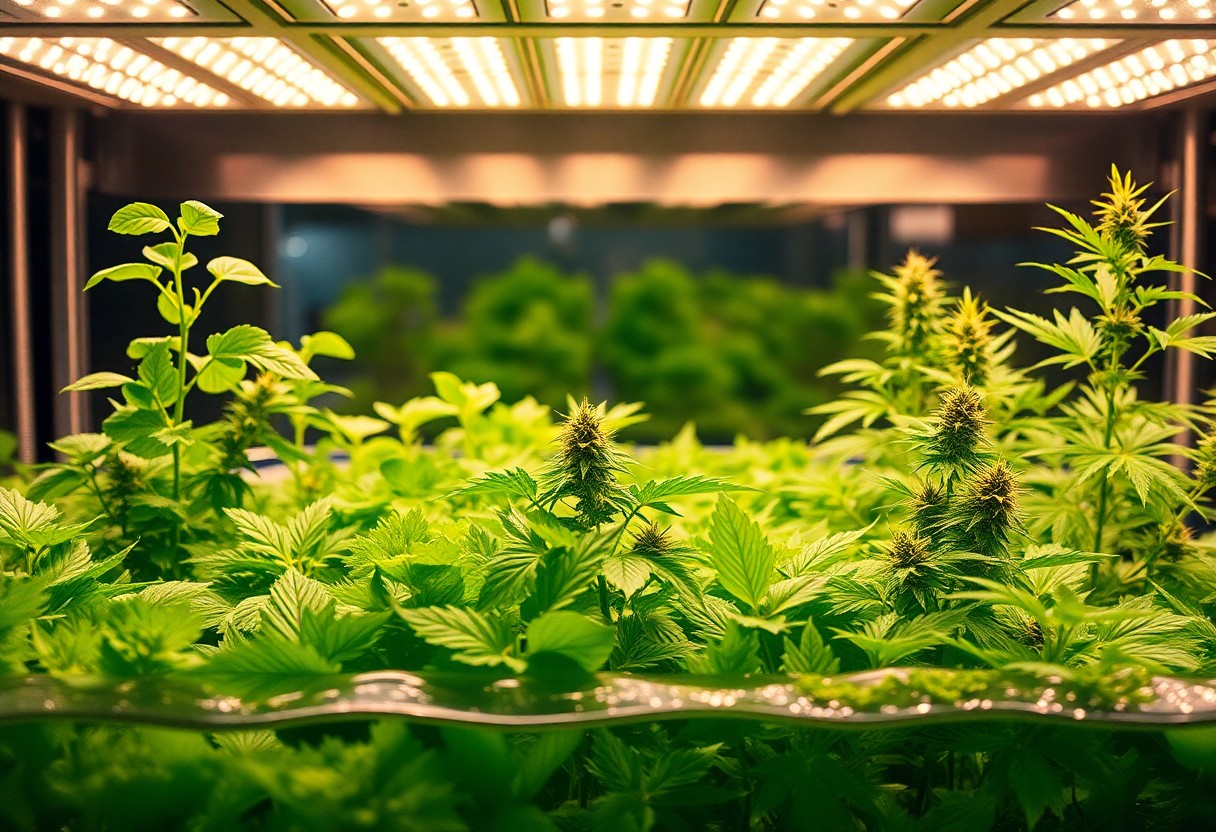
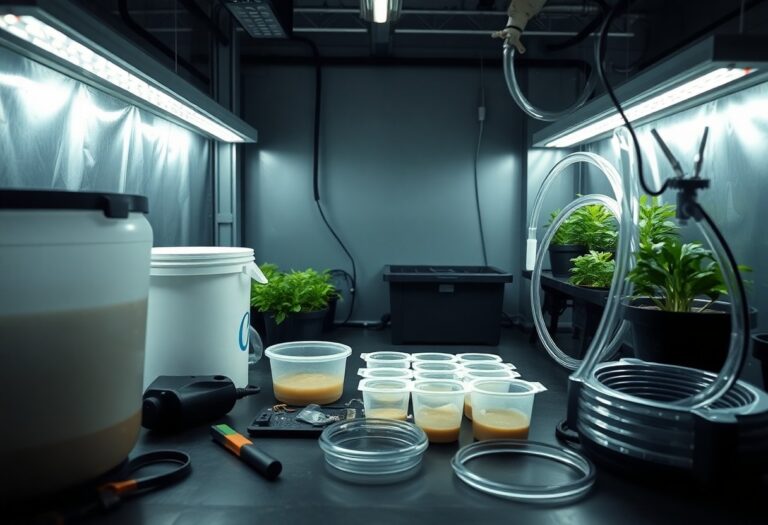
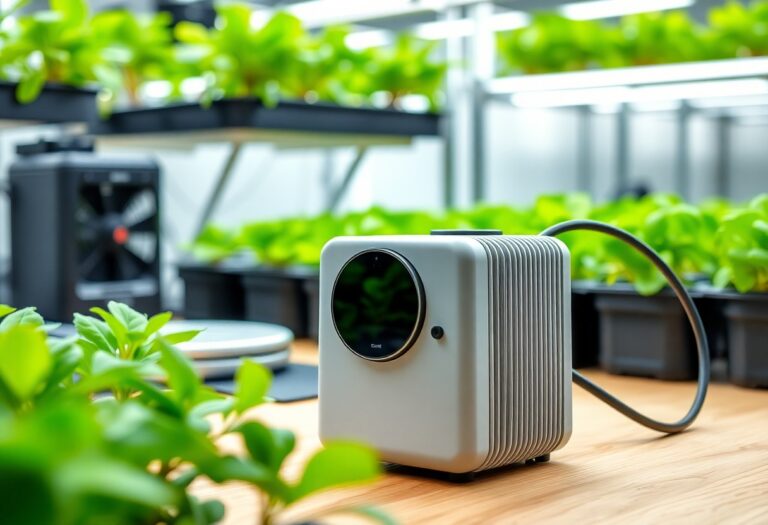
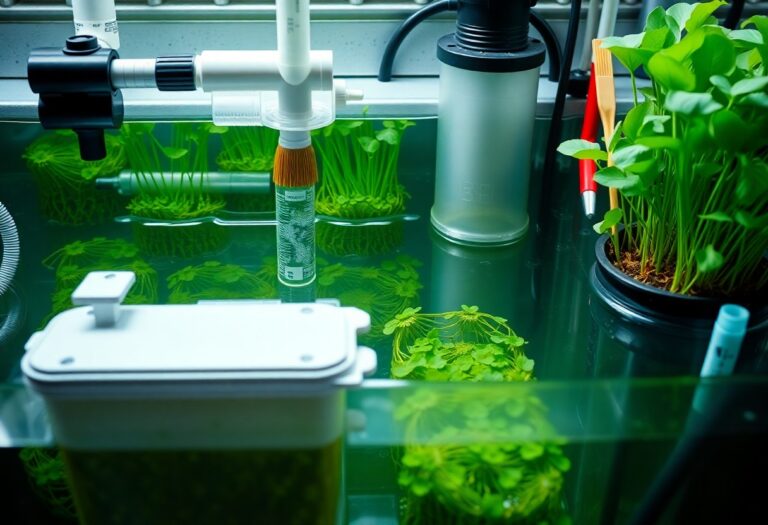
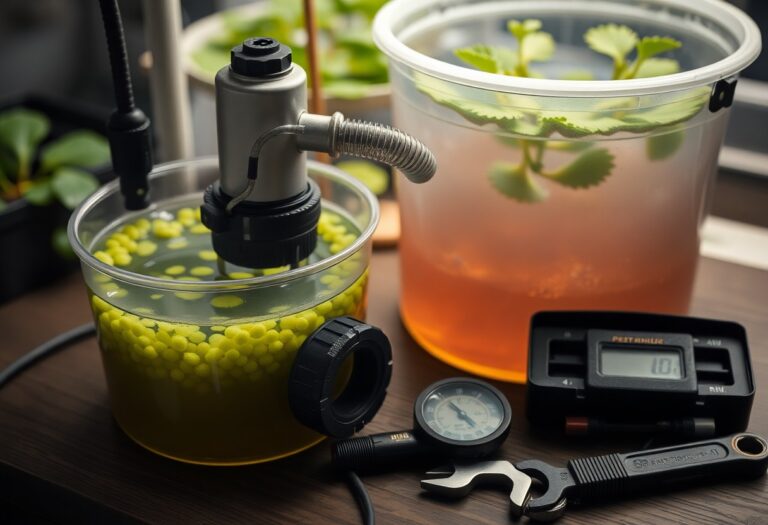
Leave a Comment